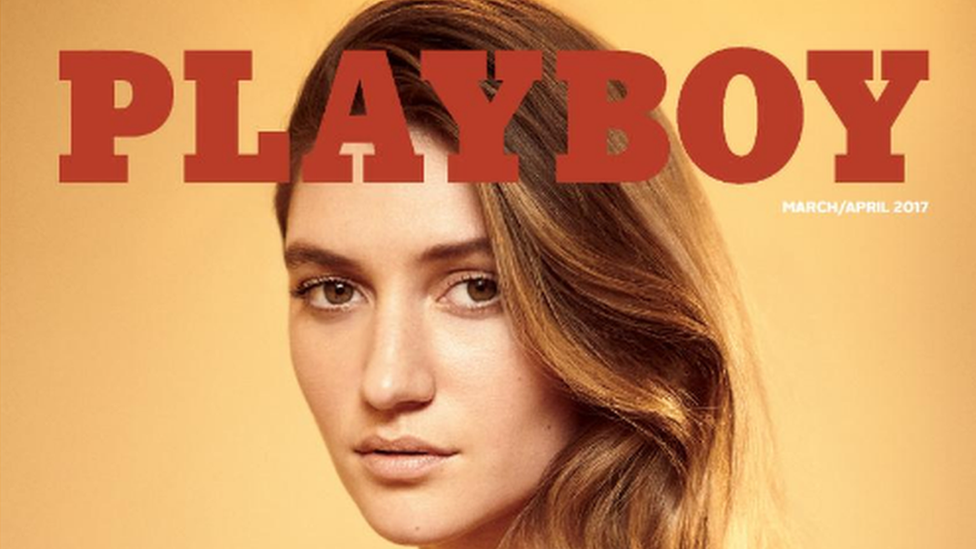Hugh Hefner: How the UK took to Playboy
- Published
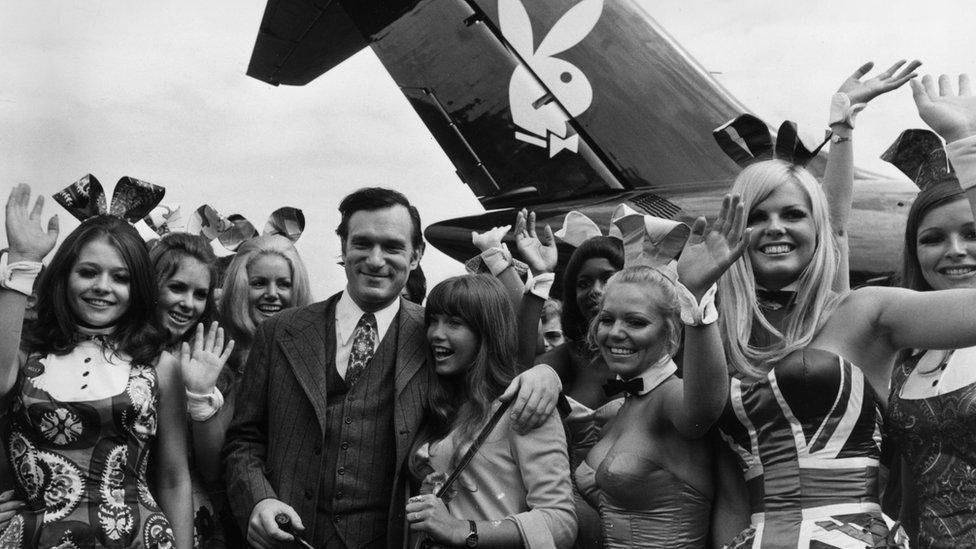
The opening of Playboy's London club in July 1966, the same month that England won the World Cup, was one of Hugh Hefner's "favourite times".
The Park Lane venue - Playboy's first overseas club - was to become the making of the company's international empire.
The magazine was shifting millions of copies worldwide and it was six years since the original club in Chicago had introduced Playboy bunny waitresses.
But in setting up the London club, Playboy executive Victor Lownes spotted a way of trumping its US counterparts - gambling.
He decided to take advantage of the UK's relaxed gaming laws to make the Playboy club a casino.
Was the Playboy revolution good for women?
He created a fantasy world - and lived the dream
And so Playboy, with its potent mix of girls and gambling, swung open its doors to a London in the midst of the 1960s sexual revolution.
Hefner later told GQ Magazine, external: "I came back from that opening convinced I was looking at the future.
"The miniskirt had just arrived, gambling was prevalent, sexual attitudes had changed dramatically.
"I'd been making this case for the sexual revolution and it was there [in London]."
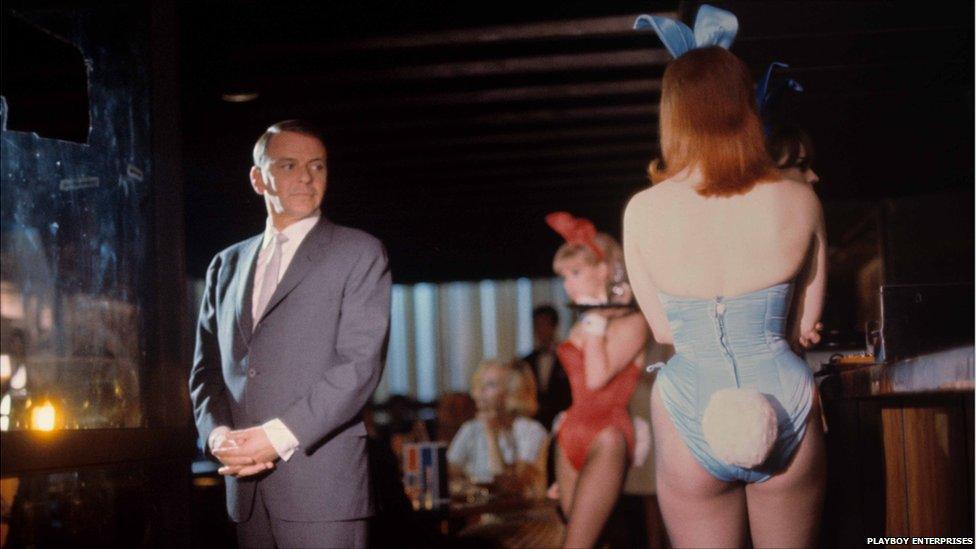
London's Playboy club soon became a regular haunt for the rich and famous including Frank Sinatra
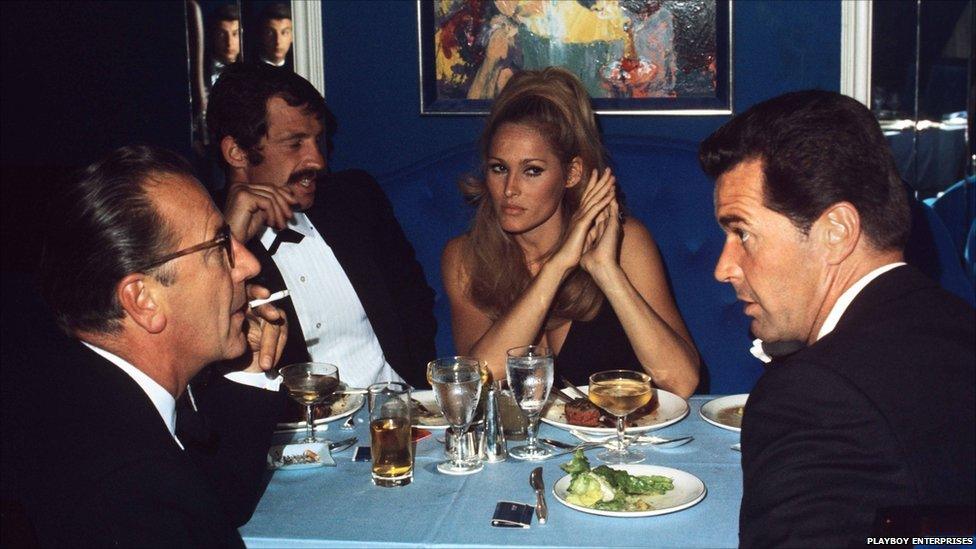
French actor, Jean-Paul Belmondo, Bond girl Ursula Andress and American actor James Garner enjoying a bite to eat at the London Playboy club
In its heyday in the 60s and 70s Hefner's club was visited by some of the biggest names in showbusiness including Sean Connery, Joan Collins, Roger Moore, footballer Bobby Moore and his wife Tina, and the influential critic and writer Kenneth Tynan.
"When we opened the [London] club in 1966," Hefner recalled, "there were three or four major Hollywood films being made in London.
"So James Garner was there. Ursula Andress was there with Jean-Paul Belmondo, Peter Sellers came; Woody Allen got up and performed."
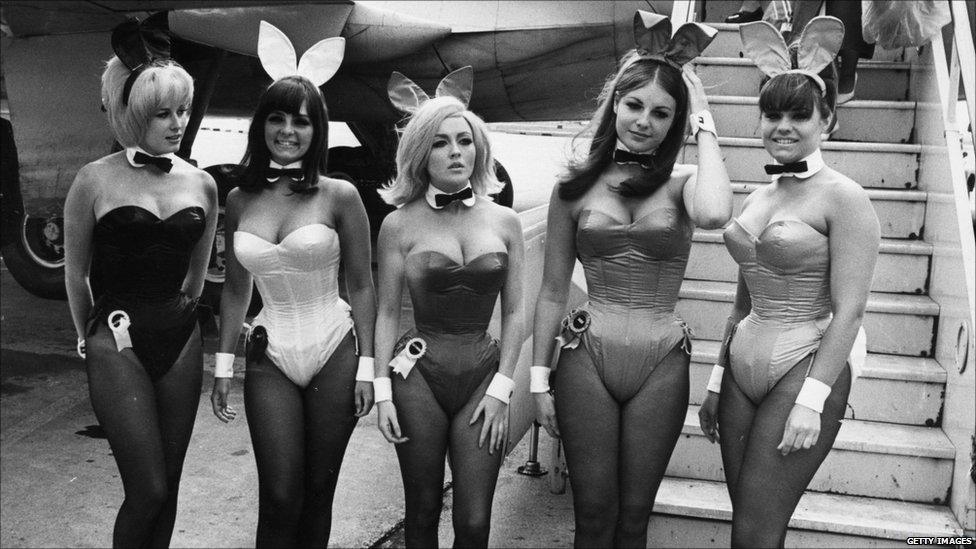
English girls were flown to the US to train as Playboy bunnies for the London club
They were all served by the distinctive bunny girls with their rabbit ears, collars, cuffs and skimpy corsets.
English girls were flown to the US to train as Playboy bunny waitresses and croupiers.
A select few were invited to do magazine shoots and to stay at the infamous Playboy mansion in Los Angeles.
Carol Needham, 57, from Surrey, was one of them.
"I lived there for about four months because they were waiting to shoot my centrefold," she told the BBC.
"Looking back it was quite an amazing thing to have happened, I think only a few from England have been a centrefold."
Ms Needham said Hefner was "a very clever man" to publish such a controversial magazine at that time.
She added: "Actually believe it or not he was quite a shy man - he was quiet.
"They [people] probably think he was quite flamboyant because of the image, the parties. But he was actually a gentleman, he was kind, and he was a nice man."
Allow X content?
This article contains content provided by X. We ask for your permission before anything is loaded, as they may be using cookies and other technologies. You may want to read X’s cookie policy, external and privacy policy, external before accepting. To view this content choose ‘accept and continue’.
The UK's capital was a natural fit for Hefner's bunnies.
Britain was more susceptible to Americanisation than other places in Europe, social historian Dr Laura Carter explained.
"Since the 19th Century, London has been an experimental urban place where the most extreme things could happen - a hotbed of sexual transgression," Dr Carter said.
"Although for the ordinary young woman living in say Bradford or Bristol in the 60s, it was still fairly conservative."
The 1960s marked the beginning of a 20 year period that would see women living more socially and sexually freely, Dr Carter added.
The contraceptive pill arrived on the NHS in 1961 and in 1967, abortion was legalised in England and Wales and Scotland.

The presence of influential critic and writer, Kenneth Tynan, shows that intellectuals also made themselves at home in the London club
Hefner went on to open two more clubs in the UK - in Portsmouth and Manchester - raking in bumper profits for the parent company.
He also acquired the Clermont Club in London's Berkeley Square - the exclusive club above Annabel's nightclub - whose members once included Lord Lucan and James Bond author Ian Fleming.
But in 1981, amid a government crackdown on the gaming industry, Playboy's London casinos lost their licences, slashing the group's income and contributing to a major decline in Hefner's fortunes.
For 30 years the Playboy clubs were considered part of the UK's social history. The flagship Park Lane club has long-since been replaced by a hotel.
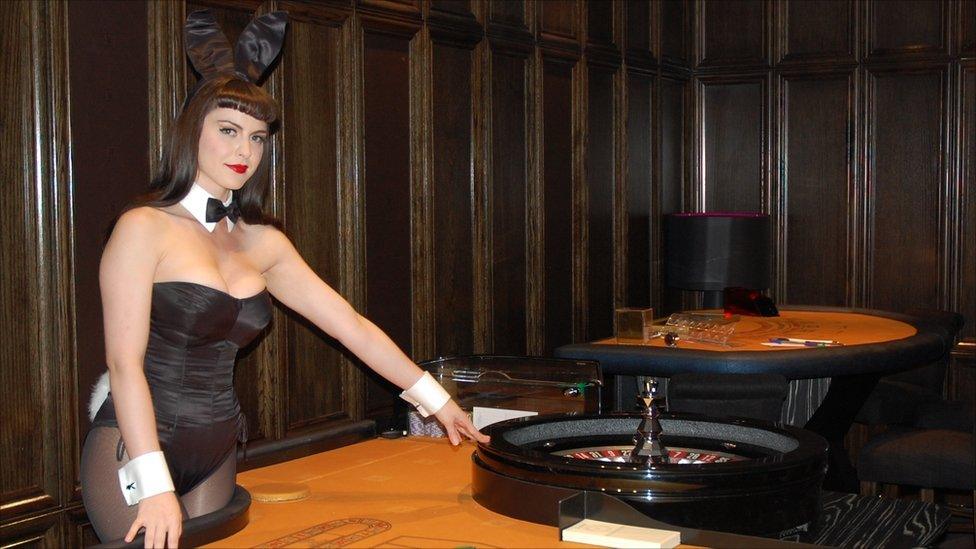
For the 2011 reopening, Playboy croupier bunnies received 11 weeks of intensive training
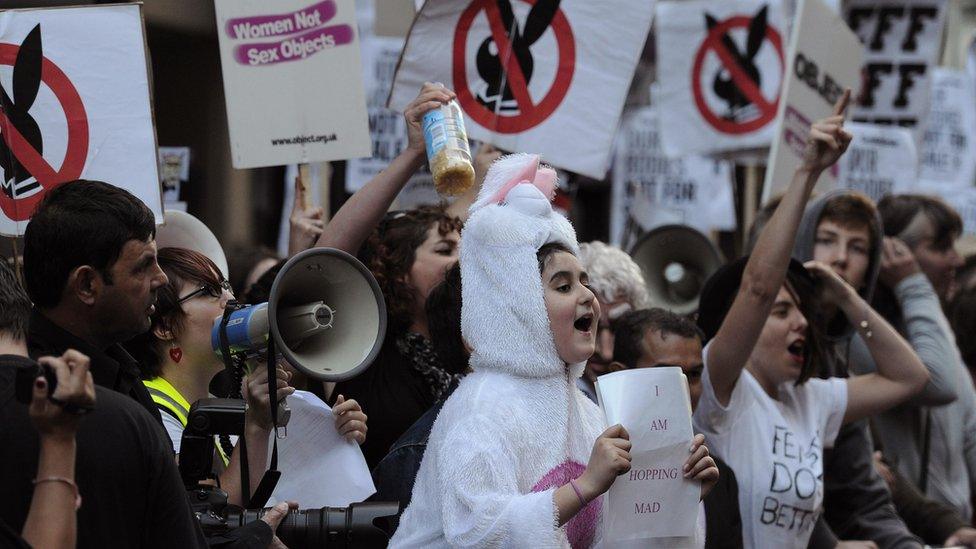
At the club's opening, protestors argued that bunnies were being used as sex objects
But in 2011, the bunnies were back.
Hefner opened a new Playboy club in London's Mayfair, recruiting 80 bunnies and signing up about 850 new members, including 350 women and stars including Elton John's partner David Furnish and the model Yasmin Le Bon.
Not all were so welcoming. Angry protestors gathered outside arguing that bunnies championed the use of women as sex objects.
Feminist writer Laurie Penny criticised the reopening, calling Playboy "wilting, impotent and dated".
At the time, Hefner told the BBC: "Well for some people's tastes, freedom has its downsides."
But he argued: "Far more damage is done by the repression of sexuality, historically, than the liberation."
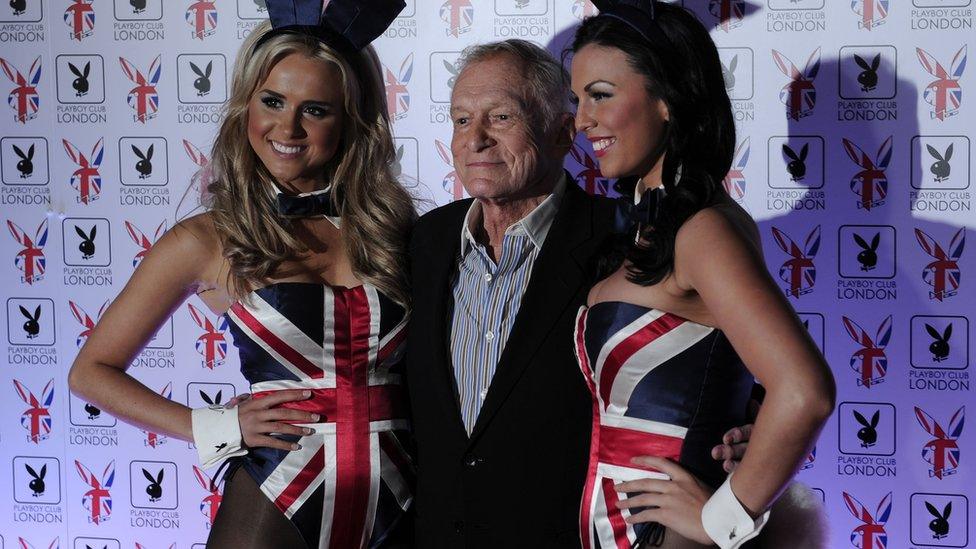
Hugh Hefner with two Playboy bunnies at the opening of the London club in June 2011
- Published28 September 2017
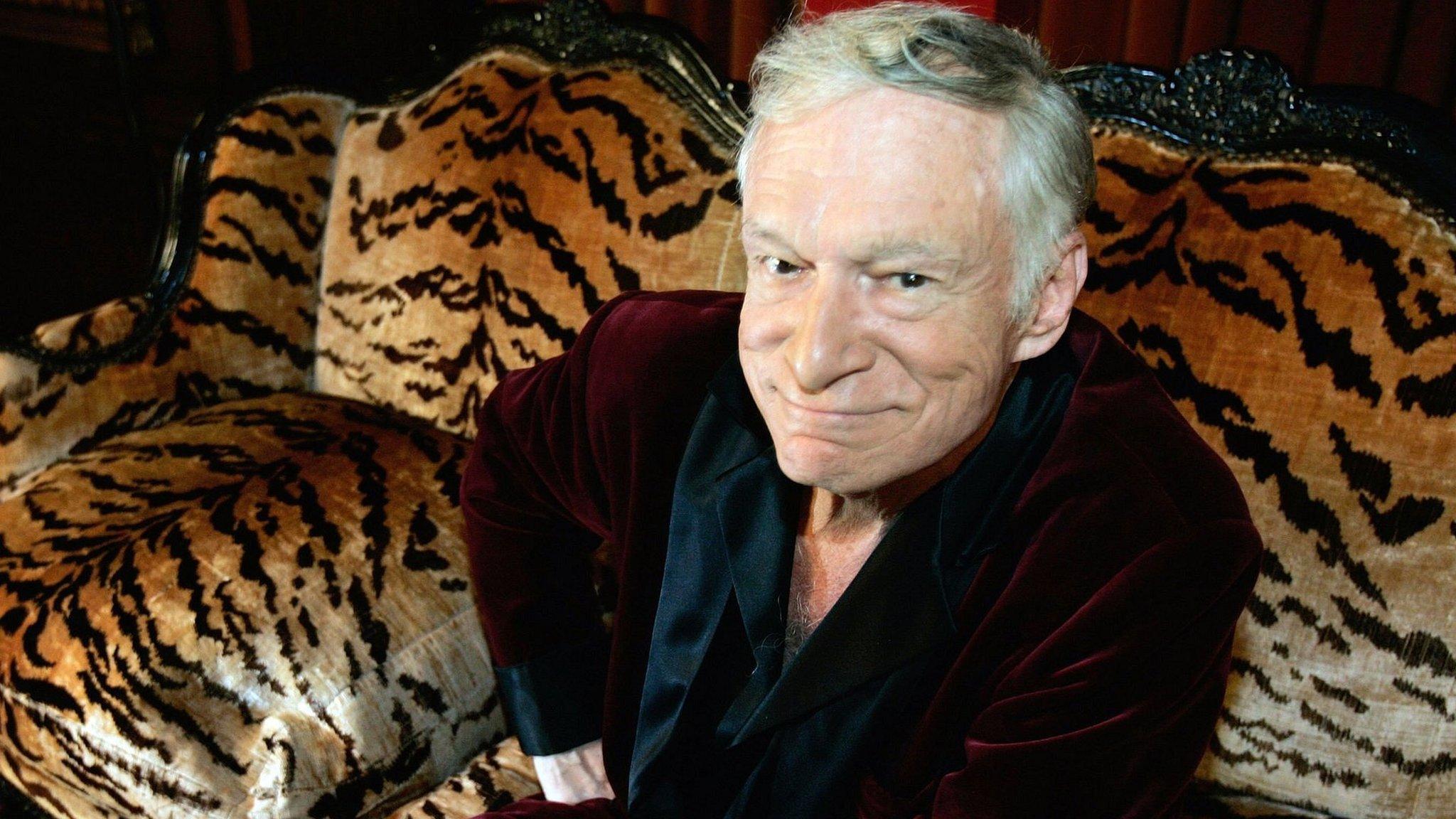
- Published28 September 2017
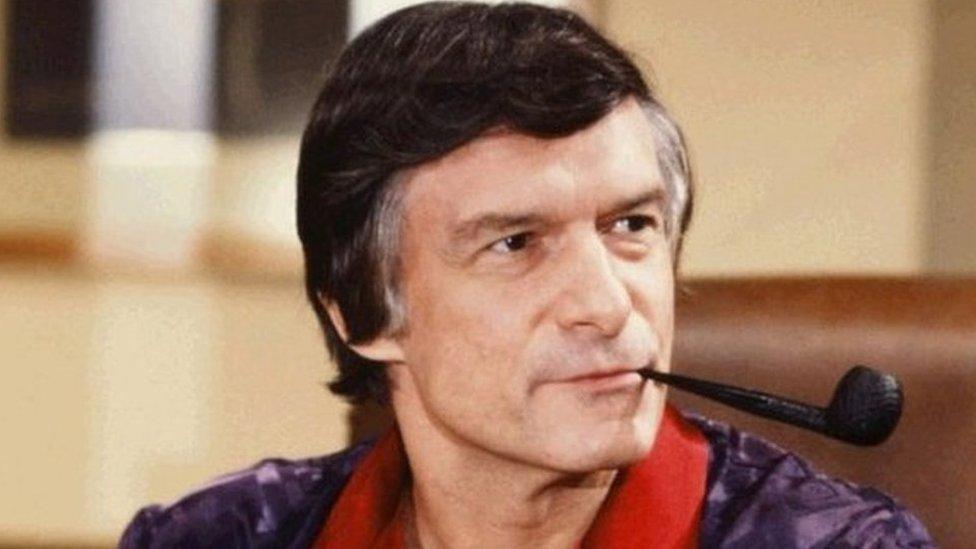
- Published14 February 2017
